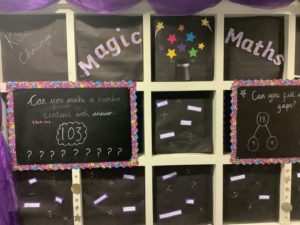
Aims:
At Holy Cross Catholic Primary School, we are committed to ensuring that children are able to recognise the importance of Maths in the wider world and that they are also able to use their mathematical skills and knowledge confidently in their lives in a range of different contexts. We want children to make rich connections across mathematical ideas to develop fluency, mathematical reasoning and competence in solving increasingly sophisticated problems. We want all children to enjoy Mathematics and to experience success in the subject, with the ability to reason mathematically.
We are committed to developing a sense of enjoyment and curiosity about the subject, as well as an appreciation of the beauty and power of Mathematics
Intent:
The intention of the maths curriculum at Holy Cross Catholic Primary School is that children are taught to become competent and independent mathematicians with an emphasis on teaching with understanding. The ‘mastery approach’ to teaching maths is the underlying principle of Mathematics Mastery. Instead of learning mathematical procedures by rote, we want pupils to build a deep conceptual understanding of concepts which will enable them to apply their learning in different situations. Through mathematical talk, children will develop the ability to articulate, discuss and explain their thinking. We will provide the children with the necessary resources to allow all children to access the curriculum and encourage them to use this where appropriate to explain their logic and reasoning.
Implementation:
At Holy Cross Catholic Primary School, we recognise that in order for pupils to progress to deeper and more complex problems, children need to be confident and fluent across each yearly objective.
Mathematical skills are embedded within Maths lessons and developed consistently over time.
We follow the Power Maths programme to ensure that the coverage for the year is completed. As a one form entry school, we use these plans to ensure that all objectives are covered for each year group and that we are planning to the three key principles to deepen children’s understanding.
We use three key principles using a CPA (Concrete Pictorial Abstract) to deepen pupils’ understanding:
1. Conceptual understanding
2. Language and communication
3. Mathematical thinking
Within Power Maths long term plan, each National Curriculum objective is broken down into fluency, reasoning and problem solving; our teachers use the learning challenges, or other sources outlined below, to teach for mastery – an approach to extend and deepen the understanding of pupils within each year group. Our teaching staff use the Power Maths programme in conjunction with a range of other useful resources such as NCETM, I See Reasoning, NRich and Cheshire and Wirral Maths Hub resources.
Impact:
The children complete end of unit assessments, these are used by the class teacher to inform planning and interventions. Summative assessment takes place at the end of each term and children’s progress and attainment is discussed with senior leaders in pupil progress meetings. Formative assessment takes place on a daily basis and teachers adjust planning accordingly to meet the needs of their class. The teaching of mathematics is monitored by leaders through lesson observations, pupil voice and book scrutinies.
EYFS
Early Mathematic skills are developed across the Early Years Foundation Stage (EYFS) following guidance from the ‘Development Matters in EYFS’ framework as well as Power Maths programme.
Maths Lessons
Concrete, Pictorial and Abstract
At Holy Cross Catholic Primary School we use the Power Maths programme to successfully implement problem solving and reasoning across all key stages and develop mastery in mathematics.

An example of the concrete, pictoral, abstract approach to a mathematical concept

CONCRETE
We use concrete apparatus such as bead strings, tens frames and counters, base 10 (dienes) and much more so that the children have a hands on approach and can really see what is happening with the numbers they’re using.


PICTORIAL
We use a lot of models and images to help the children move on from the concrete objects.




